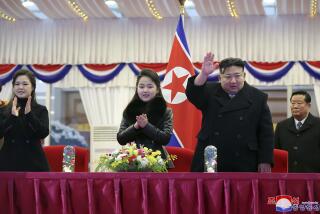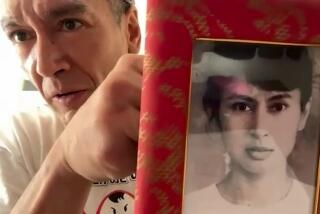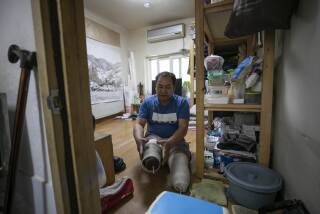Sung Ok Yom; Servant of Koreaâs Last Queen
TOKYO â Sung Ok Yom, a former servant to Koreaâs defunct royal family and the final living connection to the five-century-long Chosun Dynasty, died Saturday at age 80. On her deathbed in a Seoul hospital, she vowed to continue waiting on her beloved Queen Yun in heaven.
Sung, who died after a long battle with kidney disease, was born Jan. 6, 1921, in Seoul and was sent to court when she was 14 to start her training as a royal servant. Food was scarce in those days, and daughters frequently were sent off to work for wealthy families.
âIt was one less mouth to feed,â said Kim Yong Sook, 78, a retired professor of Korean history at Sook Myong Womenâs University in Seoul, who studied the lives of court servants. It was considered an honor for a commoner to work at court.
Although the Chosun Dynasty ended in 1910 when the Japanese deposed the royal family after a 518-year reign, the occupation force allowed the monarchy to retain its ceremonial court for several years after that. Sungâs first job was to wash clothes for Queen Yun, the widow of King Sunjong, Koreaâs final ruler, who had abdicated in 1910.
Sung worked hard and was subsequently promoted to ironing servant and then to seamstress, where she was given responsibility for overseeing several servants in the queenâs haberdashery. Queen Yun reportedly cherished Sung because she was among her youngest servants and the most attentive to detail.
âShe was so responsible and loyal to the queen that when she hurt herself with the needle while sewing, she was more concerned about staining the queenâs clothes than with her own pain,â said Kim, who interviewed Sung on a number of occasions.
When World War II ended and Korea was liberated from the Japanese in 1945, then-South Korean President Syngman Rhee took over the royal palace in Seoul for a few years. During the Korean War, the queen and her retinue fled to Pusan. But for much of the post-World War II period and throughout the 1960s, they lived in Naksunje, one of the royal palace buildings.
âAfter coming back to the palace in 1961, Queen Yun used to pass her time playing piano and reading the Buddhist scriptures,â Sung was quoted by the JoongAng Ilbo newspaper. âShe used to teach me that I had to keep my pride and dignity as a palace servant, even though the dynasty perished.â
Sung was one of the three court servants who stayed with the queen until she died in 1966. The three were allowed to stay at a government-owned house for three more years to honor the queenâs memory before being asked to move out. During the 1970s, Sung cared for the homeless elderly people at Seoulâs Bomun Temple. The other two former servants died in 1981 and 1983, respectively.
Sung was known for her habit of following court regulations to the letter. This included a tradition that called on palace servants to remain single. Sung never married, insisting that it wasnât proper. âTo avoid revealing the details of royal life or giving away court secrets, servants were not supposed to marry, after as well as during their life in royal court,â Kim said.
Lim Hyun Chin, a professor of political sociology and international studies at Seoul National University, said the end of the Korean monarchy may have eased South Koreaâs transition to democracy. âIt created a clear break between the two value systems,â he said.
Sung left behind two changes of clothing, a few socks and undergarments, and an old purse containing less than $20. In her will she wrote: âLet me serve the princess in the next world as well.â
Sung had been in the hospital since September. She was cremated Sunday and her remains were placed at the Baekwoon Buddhist temple in Gangwon province, near the queenâs grave.
âThe royal system and court servants are long forgotten by most people,â Kim said. âIt makes me very sad to think about the sacrifices made by many nameless court servants who were so loyal to the royal families.â
*
Chi Jung Nam in The Timesâ Seoul bureau contributed to this report.
More to Read
Sign up for Essential California
The most important California stories and recommendations in your inbox every morning.
You may occasionally receive promotional content from the Los Angeles Times.









